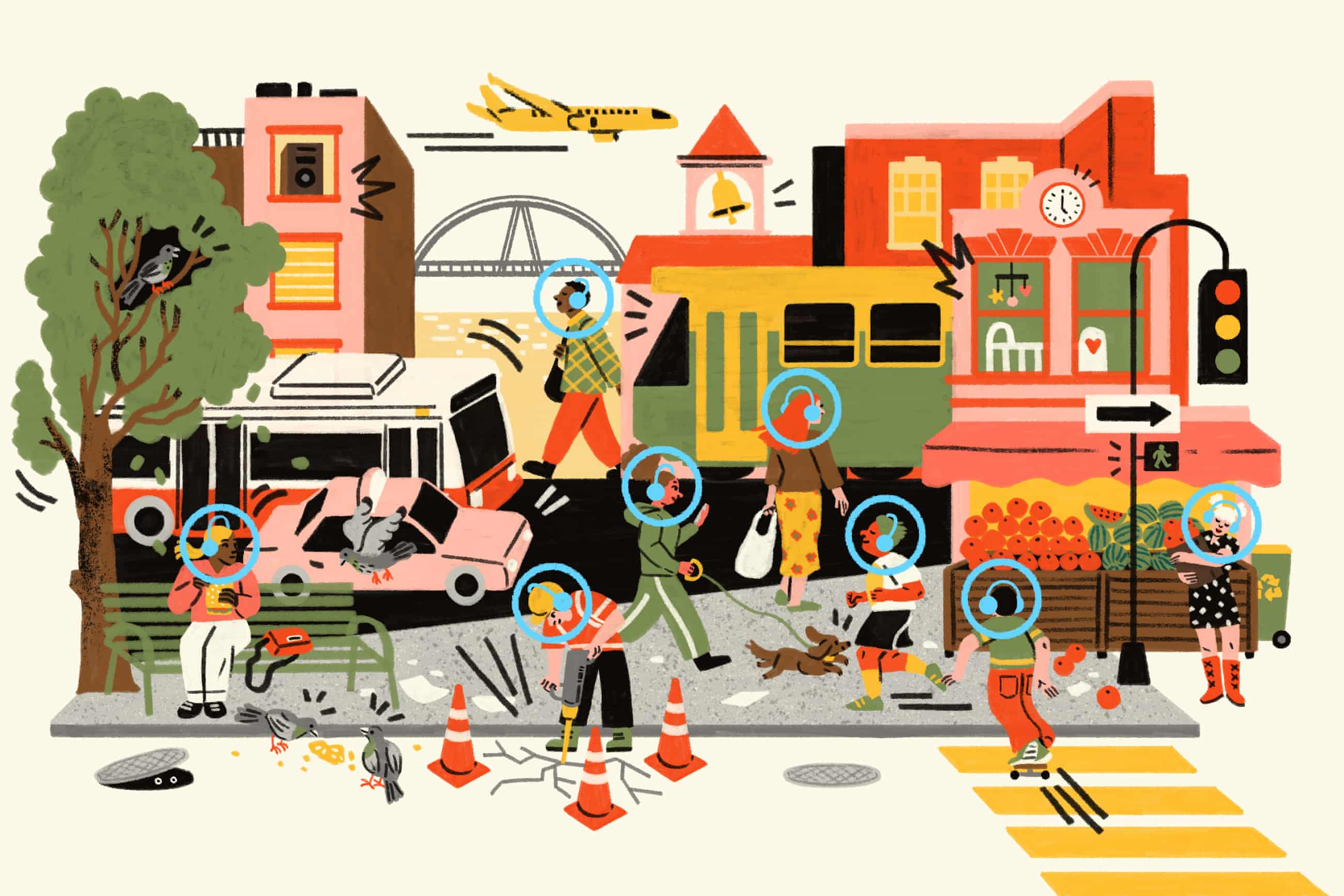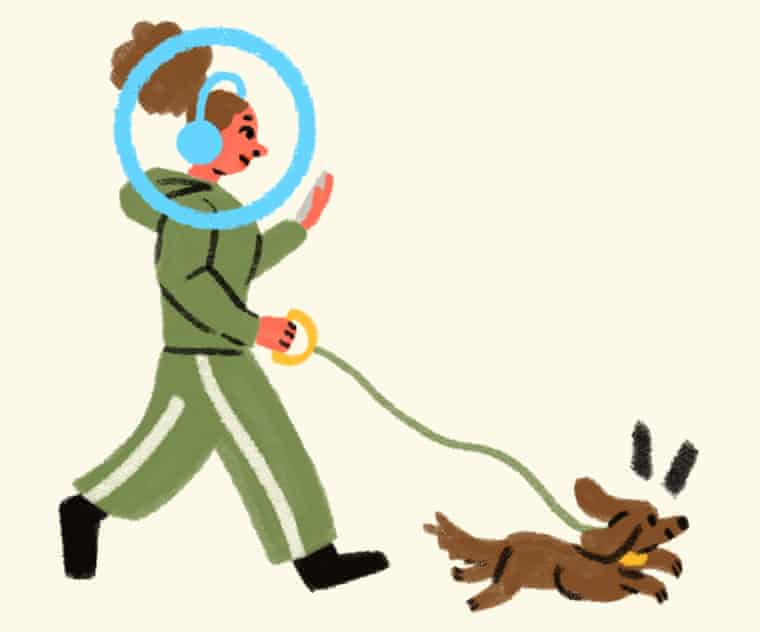The business of silence: is there a hidden cost to noise cancelling?
Headphone and earplug sales are booming, but individual efforts to turn down the volume may alter our brains and surrounds in unexpected ways
Mon 28 Aug 2023 16.00 BST
Last modified on Tue 29 Aug 2023 01.30 BSTEverywhere you look, it seems, people are resorting to accessories to turn down the volume of life: over-ear headphones on public transport, long-haul flights and in open-plan offices; coloured earplugs nestled discreetly in the concha of concertgoers, bartenders and, if you’re a snorer, perhaps the person you share a bed with.
Silence is now big business: globally, the noise-cancelling headphones market generated $13.1bn in 2021, a figure that is expected to more than triple to $45.4bn by 2031, according to Allied Market Research data.
Google searches for “noise cancelling” and “earplugs” have steadily risen in Australia in the last five years, while earplug brands now spruik their aesthetic products as tools to help prevent “parental burnout” while caring for children. While market-based solutions are bountiful, they raise a question: are there physical and social costs to tuning out?
‘We are probably due a reckoning’
Noise-cancelling technology was first developed in the 1950s to reduce cockpit noise for pilots. The first commercially available headset, released by Bose in 1989, was also marketed for aviation.
The headphones use technology known as active noise control: a microphone picks up ambient sounds and an amplifier produces sound waves that are exactly out of phase. The result, when the opposite sound waves collide, is a cancelling out of noise. They work best for low-frequency sounds less than 1kHz, such as the roar of an aeroplane engine, the drone of road traffic or the hum of an air conditioning unit.
There is no question that too much noise is harmful to hearing, but also to broader physical health. Long-term noise pollution has been linked to increased risk of cardiovascular disease, including heart attack deaths, and depressive symptoms. Guidelines stipulate that workers should not be exposed to more than an average of 85dB of noise – about the sound level generated by blenders and leaf blowers – over eight hours.
“Every time you go up 3dB above 85dB, you have to halve the amount of time that you’re in that environment at work,” says Prof David McAlpine, the academic director of Macquarie University Hearing. “You could do four hours at 88dB and then two hours at 91, et cetera.”
There are certain situations where earplugs are necessary to prevent permanent hearing loss, McAlpine says: on building sites, in the military, at concerts or in loud work environments such as for cafe baristas.
When opposite sound waves collide, it results in noise being cancelled out. Illustration: Michelle Pereira/The Guardian
Read More Here: Guardian








